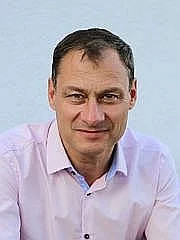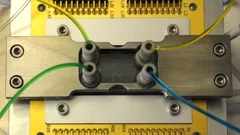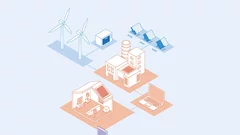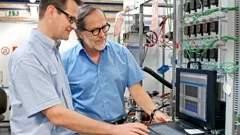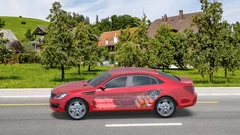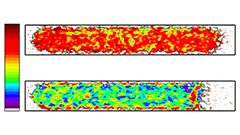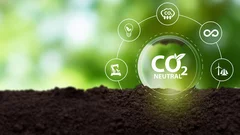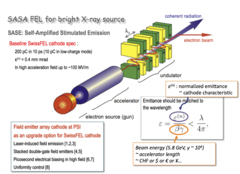Search
Head of Laboratory for Advanced Spectroscopy and X-ray Sources (LSX)
Zukünftige Computerchips mit "elektronischem Blutkreislauf"
Im Rahmen des Sinergia-Programms fördert der Schweizerische Nationalfonds das dreijährige Forschungsvorhaben REPCOOL. Unter der Leitung von IBM Research à Zürich arbeiten in diesem Projekt Wissenschaftler der ETH Zürich, des Paul Scherrer Instituts in Villigen und der Università della Svizzera italiana in Lugano gemeinsam an der Erforschung eines elektronischen Blutkreislaufs für zukünftige 3D-Computerchips. Vom menschlichen Gehirn inspiriert, entwickeln die Forscher ein Mikrokanalsystem mit einer elektrochemischen Flussbatterie, die 3D-Chipstapel gleichzeitig kühlen und mit Energie versorgen. Ultimatives Ziel ist die Entwicklung eines Supercomputers in PC-Grösse.This news release is only available in German.
«Objectiver le débat sur l’énergie»
Le débat sur l'énergie a besoin de plus de faits et de moins d'intuition - c'est ce que plaident l'expert en énergies renouvelables Thomas J. Schmidt et le chercheur en énergie nucléaire Andreas Pautz.
Enabling the use of Thin Membranes in Water Electrolyzers using a Recombination Catalyst
The conversion efficiency for green hydrogen production in a polymer electrolyte water electrolyzer (PEWE) is strongly influenced by the ohmic cell resistance and therefore the thickness of the membrane used. The use of thin membranes (~50 micron or below) is limited by gas crossover of H2 and O2, which can lead to the formation of explosive gas mixtures. The incorporation of a recombination catalyst provides remedy and allows a more dynamic operating mode.
Five times less platinum: fuel cells could become economically more attractive thanks to novel aerogel catalyst.
Fuel cells that convert hydrogen into power and only produce pure water as a by-product have the potential to lead individual mobility into an environmentally friendly future. The Paul Scherrer Institute (PSI) has been researching and developing such low-temperature polymer electrolyte fuel cells for more than 10 years and initial field tests have already demonstrated the successful use of these fuel cells in cars and buses. However, further research is still required to improve the durability and economic viability of the technology. An international team of researchers involving the PSI has now manufactured and characterised a novel nanomaterial that could vastly increase the efficiency and shelf-life of these fuel cells à as well as reduce material costs.
Publications
Thin Films and Interfaces
Mit Röntgenlicht zu besseren Antrieben
Um den Strassenverkehr der Schweiz zukunftsfähig zu machen, ist vor allem Forschung gefragt. In den Grossforschungsanlagen des PSI untersuchen Chemiker und Ingenieure, wie Antriebe effizienter und abgasärmer werden.
Ice in fuel cells imaged directly for the first time
Researchers from the Paul Scherrer Institute (PSI) have succeeded in imaging the distribution of frozen and liquid water in a hydrogen fuel cell directly for the first time. They applied a new imaging technique that uses successively two beams with different neutron energies to distinguish between areas with liquid water and those with ice extremely reliably. The method therefore opens up the prospect of studying one of the main problems of using fuel cells to power vehicles: ice can clog the pores in the fuel cells and affect their performance. The PSI scientists’ results will be published in the journal Physical Review Letters on 16 June 2014.
List of papers describing details of the beamline
Please cite the corresponding beamline paper in your publications. Contact the beamline scientist if you are not sure which paper you should cite.
Collaborations
We are working together in our actual (and past ) projects with various national and international collaboration partners.
La Suisse en route vers le zéro net
Les institutions du Domaine des EPF mettent en commun leur expertise pour atteindre l’objectif zéro net.
Green fuels for aviation
In a new initiative, PSI and Empa want to jointly develop a process for producing kerosene from renewable resources.
Vacuum Nanoelectronics
We have been studying all-metal field emitter array (FEA) cathode [1-14] as a potential high current and high brilliance electron source for advanced accelerator applications e.g. X-ray free electron lasers such as SwissFEL [15], requiring stringent cathode specs: high current (200 pC in 10 ps), low normalized transverse emittance (0.4 mm-mrad), and compatibility with the high acceleration electric field in the order of 100 MV/m.
